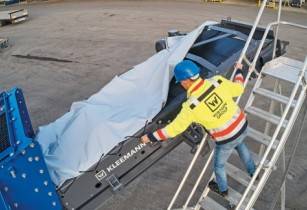Fire protection of a shaft must not be diminished where the shaft is penetrated. If there is any penetration of shaft, fire stopping must be carried by approved and recognised fire stopping methods, cavities going into this shaft must also be fire stopped
Insulation refers to the effectiveness of the fire stopping arrangement in restricting heat passage through the assembly at a level where it poses no risk to combustible materials on the other side of the fire stop.
Jeremias has developed in the last years a full range of fire rated duct systems to cover the requirements of the different countries? regulations about this subject. Products tested for internal and/or external fire, for vertical and horizontal applications, and for different levels of fire rating from 30 minutes up to 180 minutes in some cases. The expertise gained during the development of all these systems has helped us to achieve the first factory made metallic modular fire rated duct with rock wool insulation, instead of ceramic fiber. This system is the DW-ECO E130 (25 mm rock wool insulation), which combines the big advantages of the standard Jeremias rock wool system DW-ECO (cut-able system, no thermal bridge at any point, structural stability, etc.) and the fire resistance needed for some specific applications (kitchen exhaust mainly). And also, is the first system in the market with the access panels integrated in the test, according to the new version of the test standard EN 1366-1. This gives a total warranty of security in the system covering the only part which was not tested in the past.
Systems for fire rates of 60 minutes (SV-EI60) and 120 minutes (SV-EI120) are also defined with 50mm and 100mm ceramic fiber insulation respectively. These systems are specifically designed for ventilation installation for high fire risk sectors in buildings.
Another very important point in fire rated ventilation ducts mainly for kitchen exhaust applications, in the tightness of the duct. Any leak in these systems can create problems on bad smells in the area where the ducts run through. This tightness is fully warranted by Jeremias systems because the connection between pipes are exactly the same ones used for chimney systems, whose requirements and test for tightness are much higher than the ones for ventilation ducts (the maximum leakage rate admitted in chimney systems is around 20 times lower than in ventilation ducts for the same value of pressure inside).
The building regulations in Europe are not the same in each country that is the reason why Jeremias is continuously adapting their products to market specific requirements and recently also developed an EI 60 system in accordance to the ISO6944-2 Standard.
These fire rating developments has allowed Jeremias Middle East to win this few projects the middle East related to ovens and kitchen applications. Attached photos are for a bakery factory in Dubai that is being installed as we speak.



























